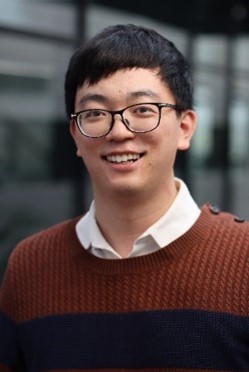
时间: 6月6日周二上午 10:30-11:30
地点: 兴庆校区 仲英楼 第一会议室 A245
邀请讲座人:于中政 博士
简介:2015年毕业于西安交通大学材料科学与工程学院,获得学士学位。2020年毕业于南洋理工大学,获得博士学位,导师为 Timothy Thatt Yang Tan教授。曾在南洋理工大学和剑桥大学卡文迪许实验室从事博士后研究,现任剑桥大学卡文迪许实验室玛丽居里学者,合作导师为Akshay Rao教授。研究领域为稀土/有机无机纳米复合材料及其能量转换过程,目前主要从事近红外II区疾病的早期成像、诊断和治疗以及近红外II区发光LED的相关研究。以第一/通讯作者身份在Nat. Commun., Angew. Chem. Int. Ed. ACS Nano, Nano Lett.等国际著名学术刊物发表高水平学术论文10余篇,担任Nat. Commun., Adv. Funct. Mater., 等多本国际知名学术刊物审稿人。获新加坡专利两项,多次受邀参与国内外学术会议/邀请报告。
摘要:Lanthanide-based nanoconstructs have gained increasing attention in recent decades due to their unique optical and magnetic properties. The design of lanthanide-based nanosystems is expected to contribute to various applications including biomedical applications, data storage, optical communications, remote sensing, super-resolution fluorescence microscopy, and night vision etc., due to their advantageous properties such as excellent photostability, non-photobleaching, low cytotoxicity, large Stokes/anti-Stokes shift, narrow and tunable emission peaks. There are two major limitations for lanthanide ions, including weak absorption and low photon conversion efficiency. Developing novel lanthanide-based nanoconstructs and uncovering new insights of the energy conversion pathways are key to the advancement of the field. The main goal of my research is to solve the above-mentioned limitations by engineering novel lanthanide-based nanostructures based on the design of the energy migration pathways within the f sub-level orbitals of the lanthanide ions, while garnering breakthrough insights to develop novel and highly efficient lanthanide-based nanoconstructs/hybrids. In this talk, I will introduce our recent work about a) ultrasmall/multilayer lanthanide-doped nanoparticles, b) dye-sensitized lanthanide-doped nanoparticles, and c) novel nanocomposites as photothermal agents and their corresponding applications in light-controlled release, light-activated photomedicines, sensing, multiplexing imaging, photoacoustic imaging and photothermal therapy. I hope the strategies and studies presented in this talk could further enhance the attractiveness of lanthanide-based nanoconstructs towards clinical translation and applications influencing our daily life.